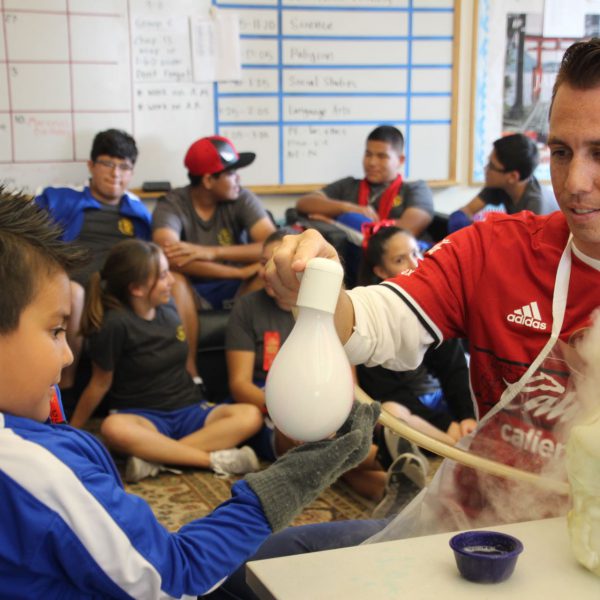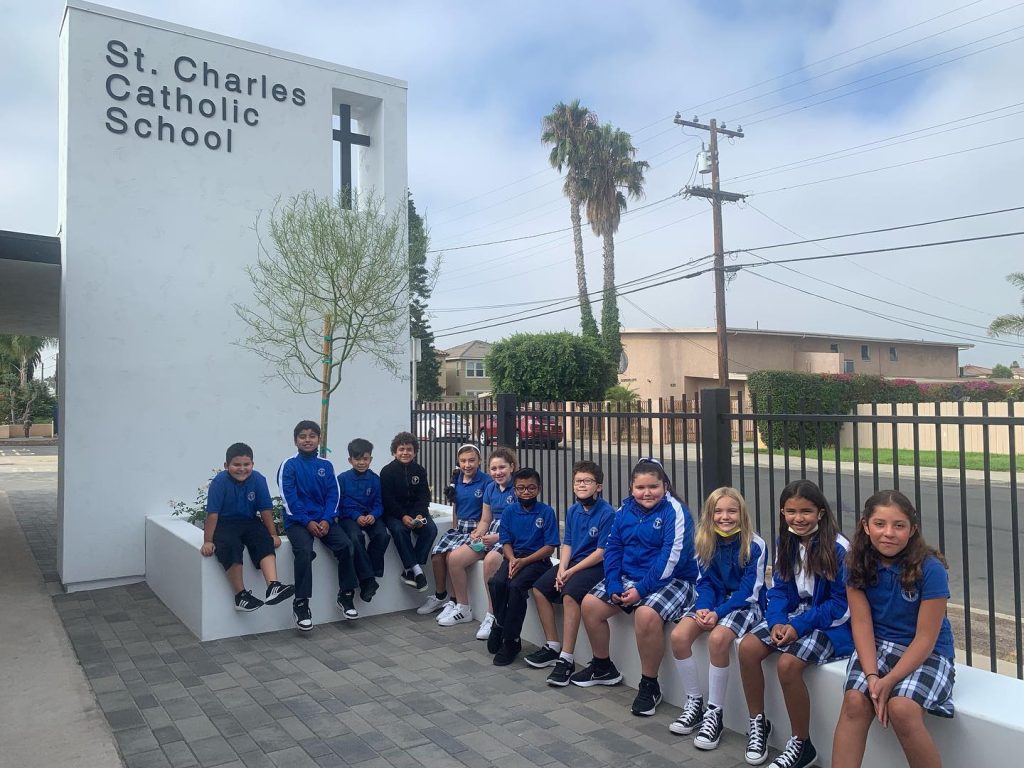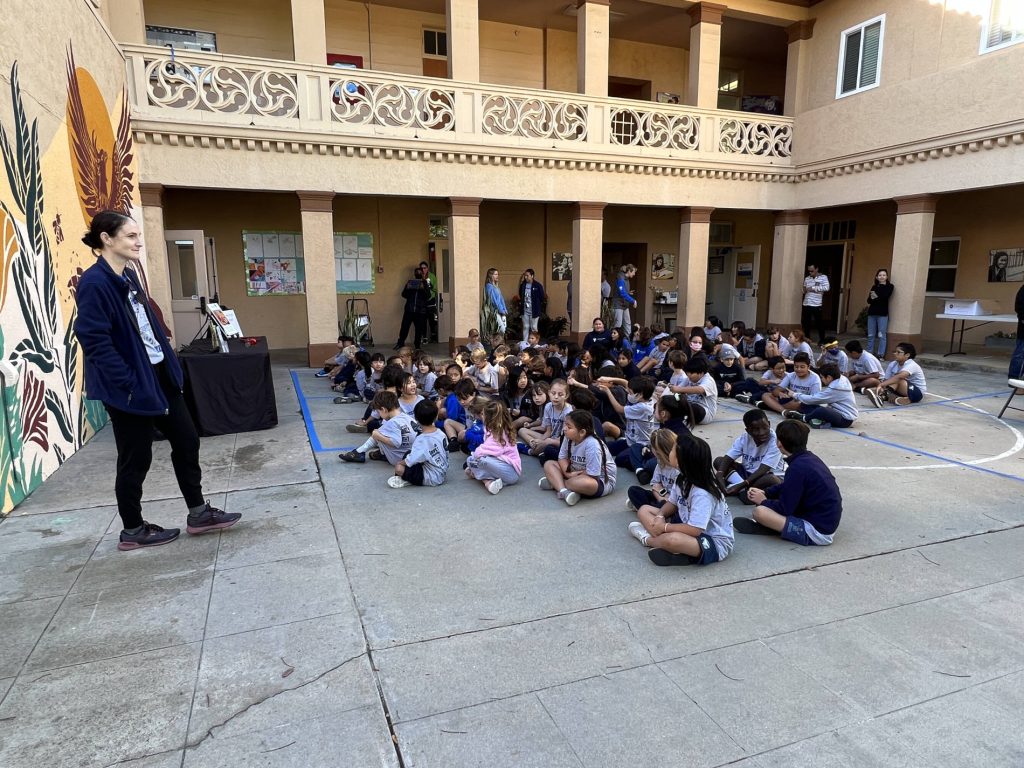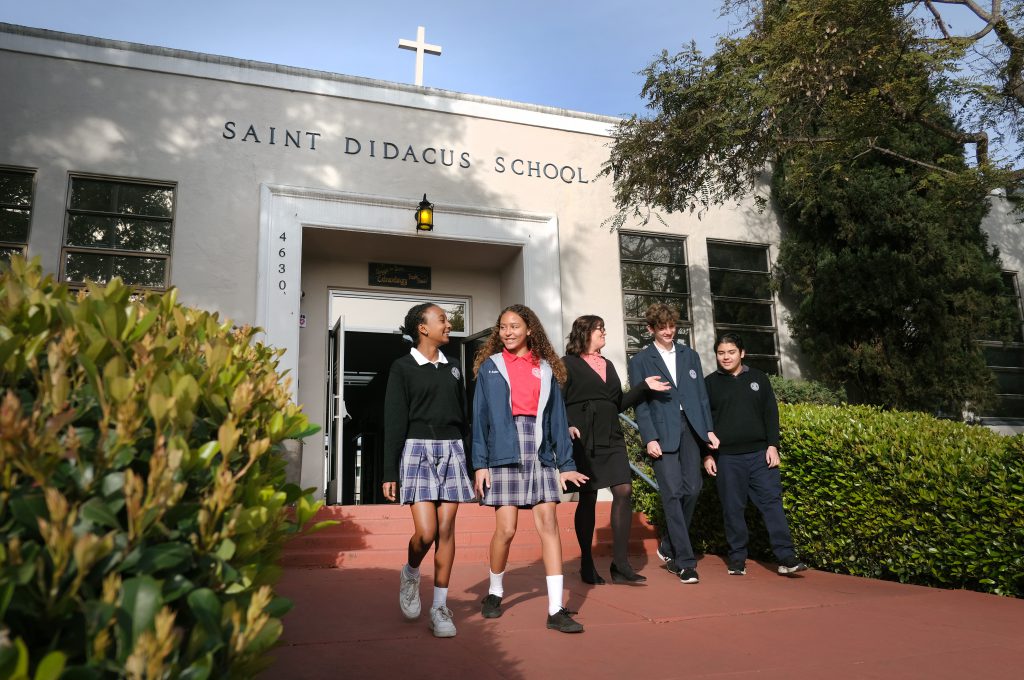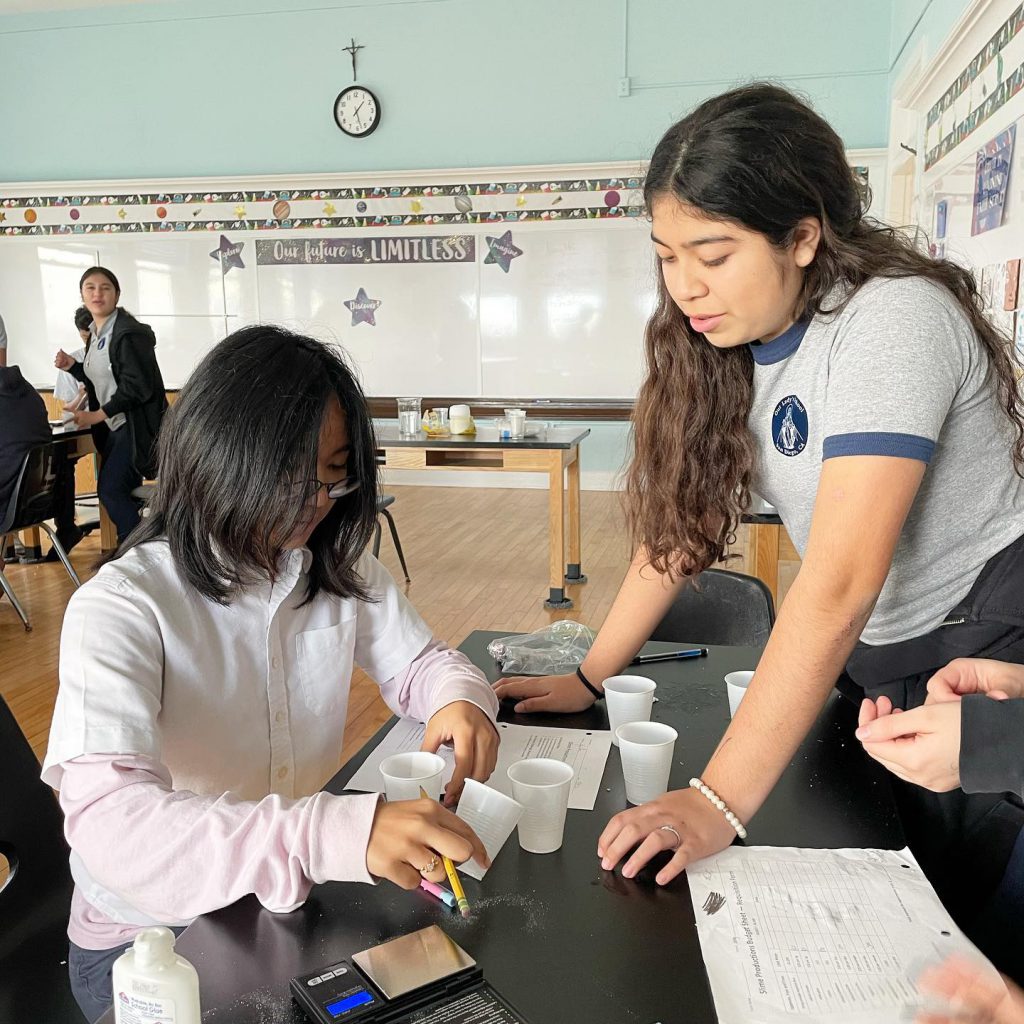SAN DIEGO – The teachers at the Diocese of San Diego’s Catholic schools are an impressive lot.
Coming from diverse backgrounds, they share the same commitment to providing their students with a solid foundation for success both in their careers as well as on the path to holiness.
Families are invited to visit a Catholic school that interests them during Catholic Schools Week, Jan. 26 to Feb. 1, and meet the impressive educators that deliver a rigorous academic and moral education every day.
The following are profiles of just three members of the diocese’s impressive coterie of Catholic school teachers.
David Blair
St. Charles Catholic School, Imperial Beach
For as far back as he can remember, David Blair has wanted to help others.
Though he initially enrolled in college as a Business major, Blair ultimately decided that teaching was a better fit for the service-oriented mindset that he had developed during his years as a student at Marian Catholic High School.
Of his passion for teaching, he said, “It really does come from serving others.”
Blair was honored in 2019 as San Diego Catholic Teacher of the Year. He is in his 16th year at St. Charles Catholic School, his alma mater, and over that time has consistently found ways to go above and beyond the minimum requirements of his job.
He prides himself on being an “academically rigorous” teacher and has seen his students rise to meet the challenges he has set for them.
A product of Catholic education, Blair is grateful for the opportunity he has as a Catholic school teacher “to integrate and weave in our faith into every aspect of learning.”
But not all of that learning takes place inside a classroom.
“I probably do at least 10 field trips per year,” said Blair, who schedules most of those trips for the weekends and, while participation is not mandatory, most of his students and his parents still choose to attend.
The trips have included frequent visits to Casa Hogar Sonrisa de Ángeles, an orphanage in Tijuana, as well as tours of local college campuses and opportunities for interfaith exchange at the Islamic Center of San Diego.
Blair also plans an international trip annually for spring break. Last year, it was an immersive cultural experience in Japan; next spring, he will take a group to Spain and Portugal.
He also recently organized a Thanksgiving potluck for his eighth-graders and their parents. Some 75 people attended that non-mandatory event, which was held in his classroom. At the potluck, his students recited some of the original poetry that they had written in class.
Blair estimates that he also spends between 300 and 400 hours a year coaching such sports as football, girls volleyball and soccer at St. Charles School.
In addition to his daily work inside the classroom, he acknowledged that he spends many hours “doing a variety of things outside of the classroom.”
“But,” he said, “I enjoy every bit of it.”
As a way of extending his influence even further and making an impact on more than his own students, Blair co-founded Project TopFloor, a nonprofit through which he leads seminars on teaching methodologies and best practices for teachers and administrators.
“This is one way for me to serve thousands of students, while still being able to teach the single student in front of me,” he said, expressing confidence that the educators who attend his training sessions take what they’ve learned into their own classrooms.
Robin Pulido
St. Rose of Lima School, Chula Vista
The sense of tradition is strong at Catholic schools. But some might be surprised by how just hard these schools and their teachers work to be on the cutting edge, equipping their students for success in an increasingly technology-driven world.
Robin Pulido, who runs the computer lab at St. Rose of Lima School, has seen a lot of changes firsthand since accepting that position in 1995.
“I started teaching computer classes with Apple IIs and 5¼-inch floppy disks,” said Pulido, who is currently in her 45th year as an educator, contrasting this with the tablets and Chromebooks utilized by today’s students.
The computer skills she teaches have also changed over the years.
Back in the early days, students would learn keyboarding and play co-curricular games, she said. They still do that, but now they also learn research skills, office suites, media literacy, Internet safety and more.
Students in kindergarten through eighth grade have computer lab at least weekly, with each grade level honing skills that build upon what was learned the previous year.
Students’ access to technology is not limited to Pulido’s class, however. Sixth- through eighth-graders use technology daily in their classrooms, and the school also has extracurricular offerings, including an after-school robotics and tech team, to demonstrate real-world applications of what they are learning.
Pulido said that she is “pretty much self-taught” when it comes to computers. But the seriousness with which she takes her job has required her to keep learning year after year, too. She is a longtime member of CUE (formerly, Computer-Using Educators) and has kept up-to-date through online professional learning networks and conferences, where she has also been a frequent speaker.
Pulido is currently in her second tour of teaching at St. Rose of Lima School. She has been there since 1992, but previously taught there from 1975-1983. She taught at Marian Catholic High School (closed in 2007) from 1983-1989 and subbed in both public and Catholic schools from 1989-1992.
Raised Lutheran, Pulido became Catholic during her senior year of college at the University of San Diego. She later sent her own two children to St. Rose of Lima .
For Pulido, Catholic schools are worth celebrating.
“We get to teach and live a faith life,” she said. “We cover all the California state curriculum and get to add religion and morality. Our schools are so family- and community-oriented as a result.”
One of her students this year is the son and grandson of past pupils. She has taught so many second-generation students that she “lost count long ago” of just how many. She also has former students among her colleagues.
“If you want a great academic foundation, you might be able to find it elsewhere,” she said, “but in a Catholic school, you can find faith, family, community, service and that great academic foundation all in one place.”
Ahmad Rice
St. Rita’s Catholic School, San Diego
For five years of his life, Ahmad Rice was a forensic chemist with the Drug Enforcement Administration (DEA).
He was proud to be associated with and to hold such a “very prestigious position” in a respected agency, he said. He had a security clearance and was identified as an expert witness when testifying in court proceedings.
But as impressive as his former job might have been, Rice knows that he is now precisely where he is meant to be. He is currently in his sixth year of teaching at St. Rita’s Catholic School.
“This is a vocation for me,” said Rice, who teaches seventh grade and is also the science teacher for grades 5 through 8. “This is not just a job … I really feel like I belong in education” and, more specifically, “here at St. Rita’s.”
As a youth, Rice was inspired by the TV series “ER” and wanted to be a doctor. In college, however, he switched majors from biology to chemistry, feeling that there were “multiple avenues” open to him with the latter in terms of potential careers.
After graduation, Rice served as classroom teacher for the first time, teaching for eight months at a magnet school in Baltimore’s inner-city before relocating to California to begin his work with the DEA.
Five years later, seeking a new opportunity, he returned to teaching. He joined the faculty of Mater Dei Catholic High School, where he taught biology and chemistry for three years and coached volleyball for six years.
After starting and operating his own volleyball club for a few years, Rice returned once again to teaching, this time as a substitute teacher at St. Rita’s Catholic School, where he filled in for the last two weeks of the school year for a teacher who was on maternity leave.
“If you know anything about the last two weeks of any Catholic school, it’s bananas, it’s crazy, especially as a sub,” Rice said. But those two weeks were a transformative experience, after which he recognized that teaching middle school was his calling.
When the year ended, he told the principal that he was eager to remain there in “whatever capacity.”
“Wherever you need to fit me in,” he remembers saying, “I’ll go there … I just want to be a part of this school.”
And he has been ever since.
Rice, who was raised Southern Baptist and identifies as simply Christian, is now teaching at his second Catholic school.
“I’m not Catholic, but I was always drawn to being in a Catholic school, for whatever reason,” said Rice, who said the atmosphere and his experiences at St. Rita’s have provided “a way for me to stay connected with my faith.”
“I may not be a Catholic, but God is God,” he said, acknowledging what all practicing Christians share in common.
The Southern Cross

